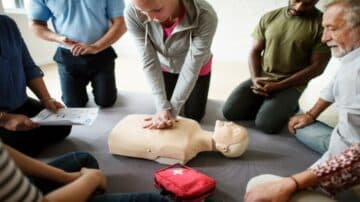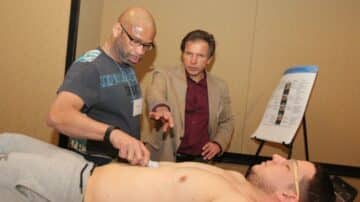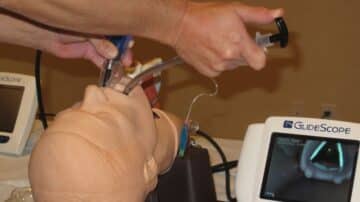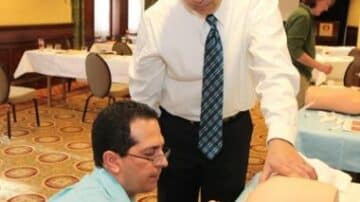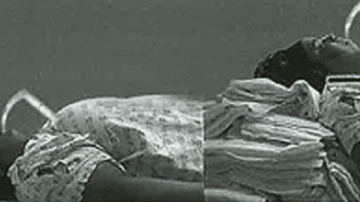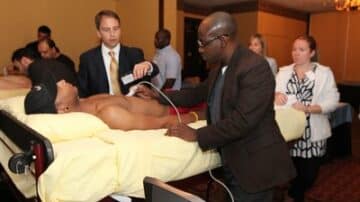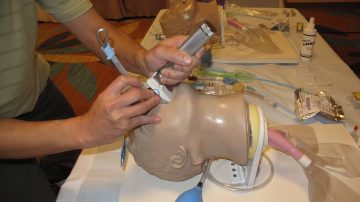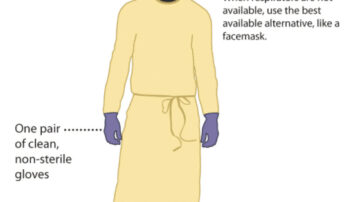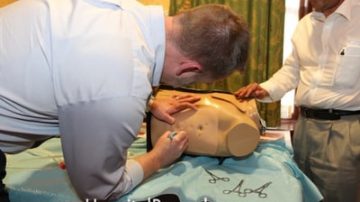Critical emergency skills are an important tool in a healthcare provider’s arsenal. They must be able to safely perform emergency procedures to save lives when faced with a critical situation. However, once they finish their studies and training, many physicians…
Read MoreMore Articles – Chest Tube, Emergency Procedures, FAST Exam, Featured, King Tube, Medical General, RUSH Exam
Injury causes over 150,000 deaths per year in the U.S. and over 5 million worldwide. Around 80% of these traumatic injuries are blunt, with incidences of fatality secondary to hypovolemic shock and intraperitoneal bleeds. Fatalities can be prevented if professionals…
Read MoreUltrasound-guided paracentesis is a common hospital procedure that medical professionals perform to drain ascites in patients with advanced cirrhosis. It has a low bleeding risk and is used for diagnostic or therapeutic purposes. Although paracentesis is generally a safe procedure,…
Read MoreVideolaryngoscopy has quickly become a popular method for airway management because it provides better visuals of the glottis. Failed intubations have decreased since more clinicians have begun to rely on videolaryngoscopy and the greater visibility it provides. Awake videolaryngoscopy is…
Read MoreMore Articles – Cardiovascular diseases, Chest Tube, Emergency Procedures, Events, Featured, King Tube, Medical General, medical procedures
Thoracostomy or the insertion of chest tubes (CTs) is a frequent procedure in clinical practices. After inserting chest tubes in the patient’s pleural cavity, they become a route for administering antibiotics, sclerosing agents, fibrinolytics, and saline. Meanwhile, indwelling pleural catheters…
Read MoreFor procedures involving lumbar punctures , sonographically guided lumbar punctures (SGLPs) have a higher propensity of being chosen when dealing with obese patients. This is based on findings of a randomized controlled trial conducted in 2007. The main takeaway from…
Read MoreWhat is conscious sedation? Conscious sedation, also known as procedural sedation, is a common practice in emergency departments for patients undergoing painful or anxiety-provoking procedures. It is intended as a less invasive method. Generally, those who undergo this type of…
Read MoreMore Articles – Arterial line, Cardiovascular diseases, Central line, Chest Tube, Emergency Procedures, Endotracheal Intubation, Events, FAST Exam, Intraosseous line, King Tube, Laryngeal Mask Airway, Lumbar Puncture, Mechanical Ventilation, Medical General, medical procedures, Needle Decompression, Paracentesis, Procedural Sedation, RUSH Exam, Thoracentesis, Ultrasound-Guided Peripheral IV
Physicians, physician associates (PAs), and nurse practitioners (NPs) need to be adept in a range of essential medical emergency procedures that they must perform in an inpatient settings. These bedside procedures are accomplished readily, but only if you have the…
Read MoreA Continuing Medical Education (CME) Course is designed for doctors, nurses, nurse practitioners, physician associates and other healthcare professionals who want to learn more about certain topics in medicine. The primary goal of CME is to improve the quality of…
Read MoreThe emergency room (ER) is an essential area of any hospital because it often deals with life-and-death situations. How medical personnel respond significantly affects the prognosis of patients who are in need of urgent care. As a medical professional, experience…
Read MoreMorbidly obese patients can pose numerous challenges when it comes to airway management. Morbid obesity can make vascular access more difficult and you need good vascular access prior to any attempts at safe airway management. In addition, morbid obesity can…
Read MoreFor decades the mantra for procedural education in medicine has been “see one-do one-teach one”. Those of us who learned bedside procedures and point-of-care ultrasound by this model understand that this approach does not optimize safe and competent performance. At…
Read MoreMore Articles – Cardiovascular diseases, Central line, Endotracheal Intubation, Featured Procedure, Gastrointestinal diseases, Glidescope Intubation, King Tube, Laryngeal Mask Airway, Lumbar Puncture, Mechanical Ventilation, Medical General, medical procedures, Paracentesis, Respiratory diseases, Thoracentesis
Simulation-based procedural training has been shown to improve procedural competence, safety, operator confidence and most importantly patient safety for every bedside procedure studied. Now, a new systematic review and meta-analysis confirms that simulation-based training in airway management improves procedural competence…
Read MoreA number of additional factors must be considered with airway management in COVID-positive patients. Hospital Procedures Consultants (HPC) can provide simulation-based training to prepare providers for airway management in COVID-positive patients. The first essential consideration is to place the patient into a…
Read MoreChest tube placement, or tube thoracostomy, can be an anxiety-provoking procedure for both the patient AND the operator. It can also be a very gratifying procedure for the operator when performed successfully and without patient discomfort. Here are a few…
Read MoreCategories
- ACLS (1)
- Arterial line (33)
- Cardiovascular diseases (77)
- Central line (55)
- Chest Tube (39)
- Dermatology (4)
- Emergency Procedures (138)
- Endocrinology (6)
- Endotracheal Intubation (36)
- Events (24)
- FAST Exam (12)
- Featured (112)
- Featured Procedure (42)
- Gastrointestinal diseases (32)
- Ginecology (3)
- Glidescope Intubation (21)
- Hematology (33)
- Hospital Procedures (85)
- Infections (32)
- Intraosseous line (8)
- King Tube (27)
- Laryngeal Mask Airway (18)
- Lumbar Puncture (36)
- Mechanical Ventilation (34)
- Medical General (95)
- medical procedures (258)
- Needle Decompression (6)
- Nephrology (11)
- Neurological diseases (12)
- Oncology (4)
- Paracentesis (32)
- Pericardiocentesis (3)
- Procedural Sedation (19)
- Respiratory diseases (85)
- RUSH Exam (8)
- Thoracentesis (37)
- Traumatology (24)
- Travel (27)
- Ultrasound-Guided Peripheral IV (13)

